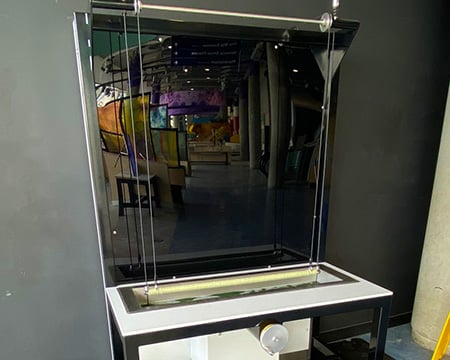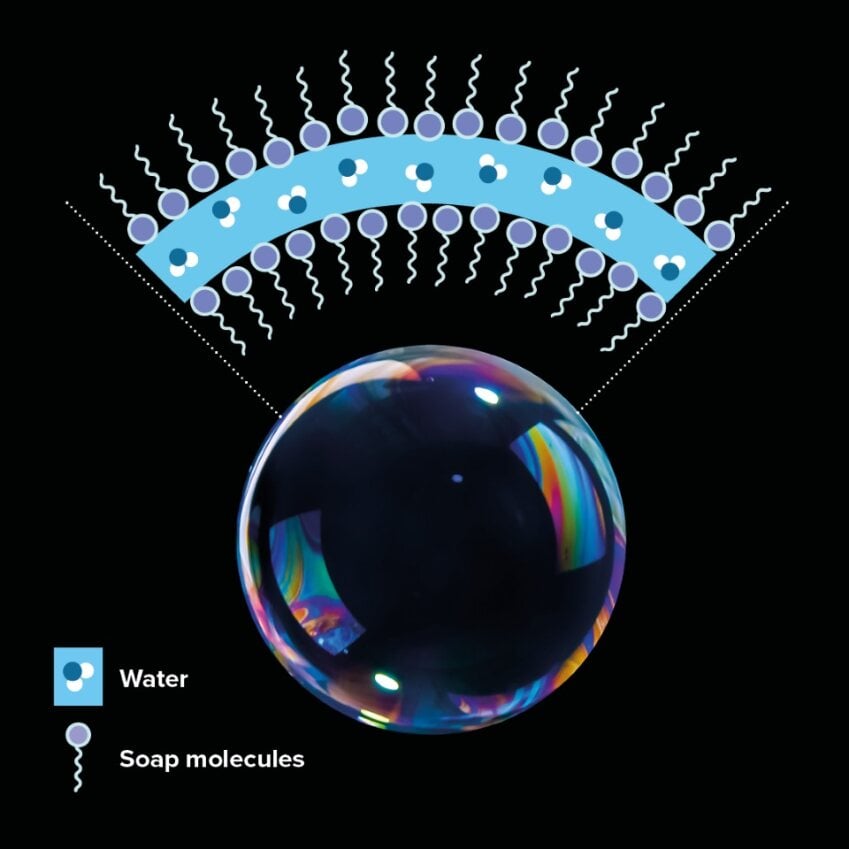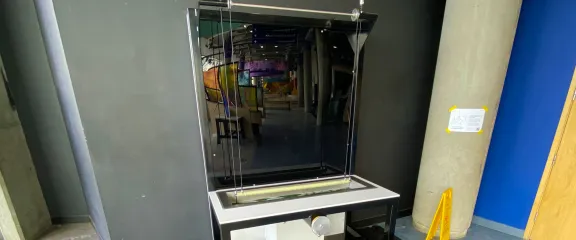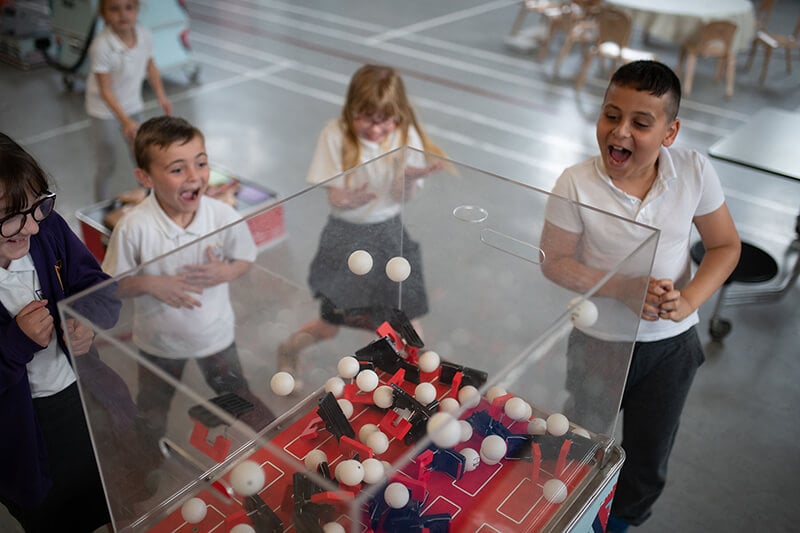Bubble wall
The bar can be lowered into the soap solution reservoir and then raised to create a bubble wall.


Bubbles can be created using a solution of a chemical called a surfactant. In this case, the surfactant is washing-up liquid. A bubble wall has 3 layers: a layer of water sandwiched between two layers of surfactant. One end of the surfactant is water-liking and faces the water layer, and the other end is water-disliking and faces away from water, into the air.
Bubbles can form different shapes depending on how they are formed; they can even be a wall.
Soap bubbles can be found in our everyday lives in the kitchen sink or in the bath.
Exploration Questions
Ask pupils the following questions as they explore the exhibit:
- What do you think the liquid in the reservoir is?
Example answers: Soap, washing-up liquid, water.
- What shape of bubble do you think you can make with the exhibit?
Example answers: Square, flat.
- What colours can you see in the bubble?
Example answer: All the colours of the rainbow.
Activity
- What happens when you touch the bubble with a dry finger?
Examples answer: It bursts.
- What happens when you touch the bubble after you have dipped your finger in the soap mixture?
Example answer: It doesn’t burst, it’s less likely to burst.
- Why do you think the bubble eventually bursts?
Example answer: Bubbles have a very thin wall that can be disrupted by being touched or the movement of air around it.
Video Duration: 1m 3s


